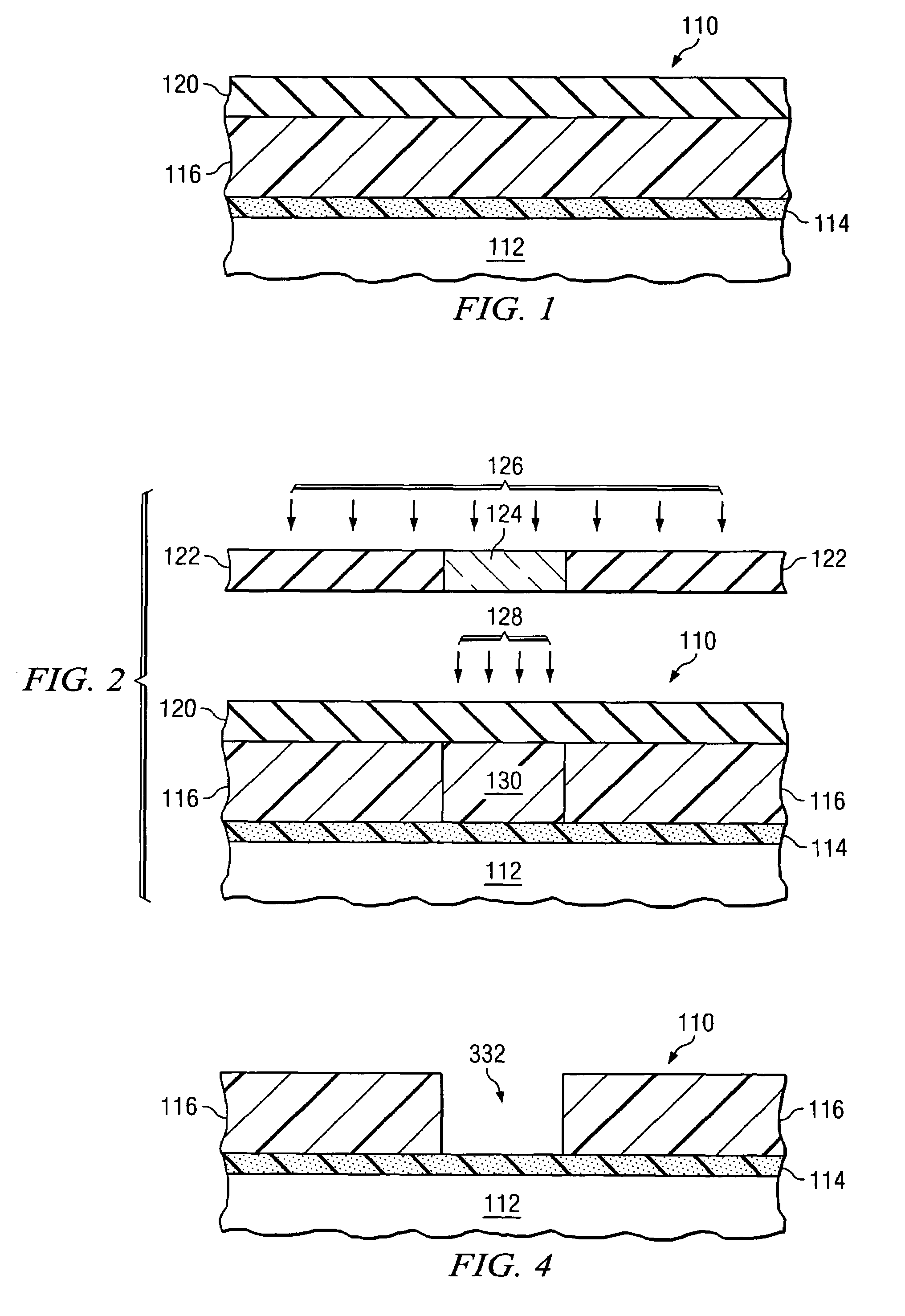Post exposure resist bake
a post-exposure resist and bake technology, applied in the field of photolithography, can solve the problems of water in the post-exposure resist, severe interference with the catalytic performance, and other defects in the completed integrated circuit, and achieve the effects of reducing the cost of production, and improving the quality of production
- Summary
- Abstract
- Description
- Claims
- Application Information
AI Technical Summary
Benefits of technology
Problems solved by technology
Method used
Image
Examples
Embodiment Construction
[0019]The making and using of preferred embodiments are discussed in detail below. It should be appreciated, however, that the present invention provides many applicable inventive concepts that may be embodied in a wide variety of specific contexts.
[0020]Referring now to FIG. 1, there is shown a cross sectional view of a semiconductor structure 110 comprising a semiconductor body 112 upon which has been deposited an anti-reflection coating (ARC) 114, and upon this ARC 114 has been deposited a photoresist layer 116. It is desired to expose selected areas of the photoresist layer 116 to a pattern of light that will result in these selected areas of the photoresist layer 116 being removed from the semiconductor structure 110 when the photoresist layer 116 is developed. Embodiments may further include a protective topcoat layer 120 over the photoresist layer 116. In a more particular application, preferred embodiments may be used to form a recessed feature, such as a via or a contact ho...
PUM
| Property | Measurement | Unit |
|---|---|---|
| temperature | aaaaa | aaaaa |
| temperature | aaaaa | aaaaa |
| wavelength | aaaaa | aaaaa |
Abstract
Description
Claims
Application Information
 Login to View More
Login to View More - R&D
- Intellectual Property
- Life Sciences
- Materials
- Tech Scout
- Unparalleled Data Quality
- Higher Quality Content
- 60% Fewer Hallucinations
Browse by: Latest US Patents, China's latest patents, Technical Efficacy Thesaurus, Application Domain, Technology Topic, Popular Technical Reports.
© 2025 PatSnap. All rights reserved.Legal|Privacy policy|Modern Slavery Act Transparency Statement|Sitemap|About US| Contact US: help@patsnap.com



